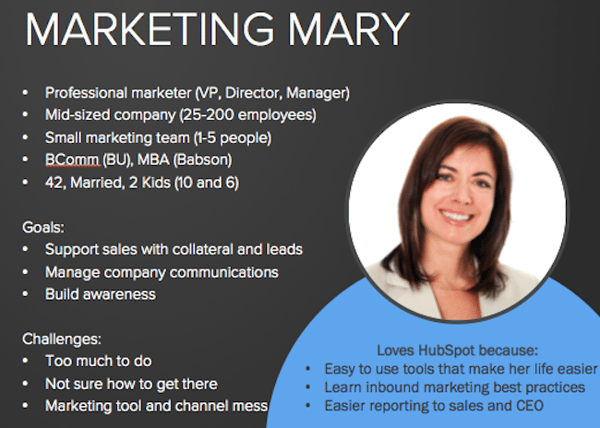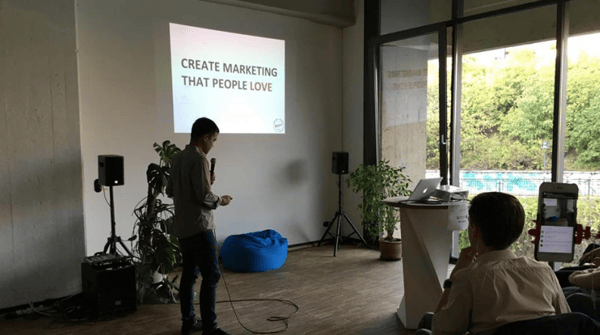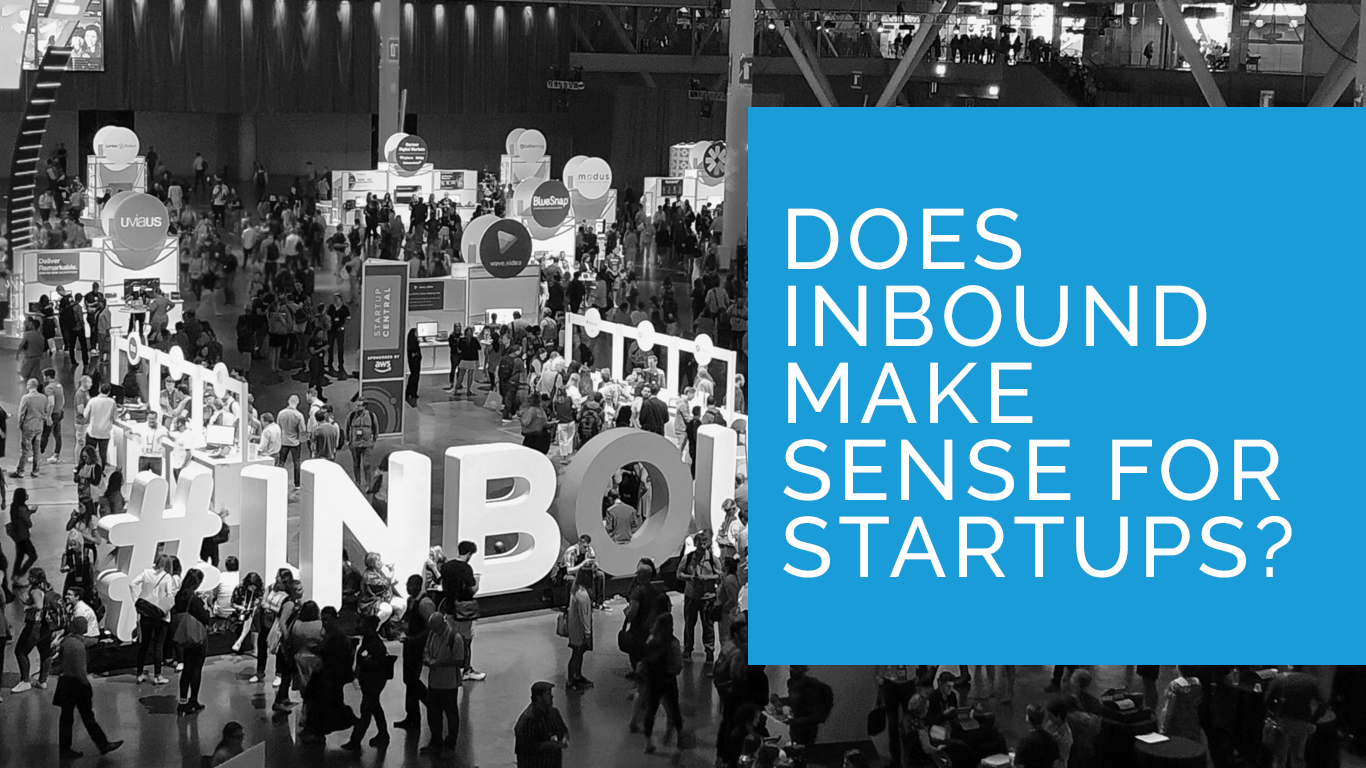It’s been an interesting and exciting month here at the SpinLab, for those who have been keeping track, our ninth class is ending this month, so we have had our hands full.
Needless to say, stuff has been going well, and our onslaught of educating them to the fullest is coming to its end.
TL;DR (VIDEO) What your startup needs to setup its first buyer personas
In case you prefer to take in your data via video, you can watch our new walkthrough that we created below.
It includes persona theory, why they are so important, and also a walkthrough on how you can best create your first personas using free tools online.
Being the head Marketing Sheriff in this part of town, it is one of my duties to insure that the startups start forming good habits when it comes to marketing.
So we recently held a workshop here with our current class going over the basics of buyer personas. After all you cannot run until you know how to crawl, the foundations are really the main part here. Not all startups have to struggle with online marketing.
"After all you cannot run until you know how to crawl, the foundations are really the main part here."
I come from a background where I have consulted a whole lot of different companies with their marketing plans and strategies.
I’ve built strategies from the ground up, I’ve healed strategies that have already been severely sickened, and I’ve help clean up some marketing messes that a majority of the world would not want to even look twice at.
Basically, I’ve had my fair share of marketing experience, including a typical startup story.
I’ve seen first hand how a startup can rapidly grown, and really reach that critical point where only two things can possibly happen:
- Either that startup will attain that glorious entity all startups are looking to attain at some point -> true scalability.
- OR said startup will enter the plague and somehow kick themselves into the downward spiral of failure.
But to be truly scalable, you must 100% of the time know why you’re doing what you’re doing as a startup.
Even more importantly, you have to look at that from the eyes of your prospects and your customers.
Enter the Elusive Buyer Persona for Startups
I hate and love working with startups at the same time. I love it because I get to work with dynamic individuals who can make changes swiftly, and whose products can seriously change the way this world of ours truly functions.
I hate it because sometimes I have to be the person who brings visionaries back down to reality. Startup founders are notorious for having that true entrepreneurial spirit, they think their products will change the world and everyone can benefit from it.
And rightfully so, this is the mentality a startup founder should have, but when a startup approaches me and tells me they truly believe they need to be selling to the whole world, it is my responsibility to bring them back down to earth and give them a reality check.
In my ever so slightly humble opinion, I believe there will never again be a product (e.g. the Car) that will once again truly benefit the entire world.
With how information and idea exchange is shared these days, the playing field for innovation is extremely restricted, but that doesn’t mean you have to beat yourself up about it. It simply means you need to take a step back and look and this from a different perspective.
I seriously love this quote from Airbnb Co-Founder Brian Chesky. In fact, I actually have hung up on my desk at the SpinLab, and I read it every single day.
As a marketing guy, things could not be more true. In 2020, it is absolutely imperative that you find the people that will absolutely love your product, and will turn into evangelists of it.
You’ve got to take in every bit of feedback this group of people has, and refine your product constantly around this concept.
Remember, fight every single day to turn more people into evangelists of your brand. Through the decades since marketing has effectively existed, there is still no better form of marketing than a friend convincing another friend of how great a product is.
There is a myriad of great information already out on the web about what a persona is, so I am not going to put a lot of time and effort into re-inventing the wheel, rather some takeaways and frequent questions around personas that I have encountered in my career.
How should startups specifically formulate their personas?
I recently had a meeting with one team from our current class who is getting ready to launch their first go to market with a pilot project.
The concept is pretty strong actually, and the potential for this project actually looks quite promising.
That being said, I always like to rewind a bit with my startups here, and ask them about their customers and who they are wanting to sell to. While they certainly had a good idea of roughly who needed to be sold this product, it wasn’t deep enough to be considered having a persona.
So we talked a bit more about what the personas are, and how you should go about formulating these. One of the founders wanted a “hack” or a way to go about getting this information faster.
I hate to break it to you boys and girls, but when it comes to doing marketing properly, there are still not a lot of hacks when it comes to the base concept.
You’ve got to put in the research into what and who your personas are, based on the data that you have already collected yourself. I recommend this flow path:
Persona Creation Flow Path
Start sooner than later!
The majority of startups have a unique advantage, in the sense that they have a clean slate with nothing painted on it yet.
It is better to build good habits with your personas now, rather than trying to clean up a mess of data later on in your company’s life.
Talk to customers or prospects.
If you’ve got customers already, good for you! Talk to these people, explain the situation, be honest.
Invite them to the office to meet you, offer a phone, buy them a coffee, whatever it takes. This first round of people you can sell to is going to have crucial feedback for your.
Write down everything, especially the things they loved about your product, and the problems they have that your product can potentially solve. If customers don’t exist, go thru the same process, but with prospects.
Ask the RIGHT questions.
What you ask these people is the most important part of this phase. Again, a lot of good guides already out there on this topic, so no need to re-invent the wheel here.
But I can highly recommend the guide HubSpot put out, as it is well made, and consistently updated to reflect the changing times that we live in.
Key takeaway, you need to ask open ended questions here to get people talking
If you’ve got no sales or prospects, talk to whoever in in charge of Sales.
If your phase is early enough where you are really not able to think about any type of selling you, talk to whoever it is you’ve put in charge of sales.
This conversation is likely going to go more into a talk about demographics, and formulation of a target audience, but don’t let it.
Remember, a persona is much much more than just defining a target audience. This persona is the full embodiment, of what you built a product for in the first place.
Cater to their every single need and pain.
Use information from tools such as Google Analytics, Trends, and Facebook Business Manager.
These tools will give you some insight on to what your persona may be, but again, urge on the side of caution here.
You’re going to be bombarded with a lot of numbers and information here, but don’t let this turn into a formulation of a target audience.
Use the figures to give you some insight on to forming a persona on your own.
Never ever consider your buyer personas as completely finished.
This is a living, breathing document, it should be revised and refined with every new discover you make about your customers and your product. Keep it fluid at all times.
Put your personas somewhere visible!
This is an old self motivation trick, you want your goals placed somewhere physical where you will consistently see them, this prevents them from falling into your pile nothingness in your head.
Same goes for your personas, keep them front of mind, front of focus.
Pay attention to goals, challenges, and why your personas love your product.
Goals. These goals should reflect how you talk to your customers every single time. Remember, whatever their goals may be, this is what you are looking to help them achieve.
Sales, Support, Checkins, it doesn’t matter, bring up the goals and the status of said goals every single time.
Challenges and loves should reflect how you’re either going to further refine your product and/or your marketing/customer support to cater to these needs as effectively as possible.

Common questions I get from startups regarding buyer personas
How many buyer personas should my startup have?
I’ve already answered this is a previous blog post, and the answer is as many as it takes.
I’ve consulted many companies and have had this very same conversation with all of them. I can give you an average which is about 3-5 personas for all company sizes.
But I have worked with companies that have had upwards of 30 because their product offerings where that dynamic. Find what works for you and go with that, you can always refine and change this number later.
Should there be differences for B2B and B2C personas?
In general yes, but the creation process is the same. The main differences will be listing the differences in how the personas deal with problems.
A B2C persona generally has the capacity to solve the problems they have on their own.
A B2C persona generally has job specific goals to hit (such as "how can I hit my revenue goal") and also might need approval from a decision maker.
How should my personas be reflected internally?
This is my favorite question of all, because a lot of companies, not just startups feel that personas only reflect something on the outside, e.g., who your customers are.
But that couldn’t be further from the truth. As you scale up, I would build your entire organization around personas.
You should start to think about having dedicated marketing, sales, and support teams to cater to your personas individually so that your customers get an amazing experience with your company from their very first touch point, through the sales process, to after sales support and trouble shooting.
As you scale, you will discover yourself that your personas may be vividly different from each other, and within, will have different problem sets. They’ll different ways they’ll want to be dealt with.
And more importantly, they’ll have different ways that they will need to be impressed. A one team for all approach is not going to be as effective at this as a team that is segmented based on buyer personas.
Furthermore on the topic of internal-ness…
While not directly a “persona” thing per say, it is important to note that you should be establishing harmony between your marketing and sales/support teams.
They should be meeting regularly and exchanging information, reviewing analytics, coming up with content to match each others goals, and most importantly, thinking of ways to make the customer experience absolutely fantastic.
As far as companies having an outstanding company experience goes, I can really recommend this other article I wrote on eve Mattress.
While most startups are still in a phase too early to think too much on this, it cannot hurt at all to start developing the roots in the early part of the game.

Adding a bit of my own flair to persona strategy in 2020
One thing that I have seen work particularly good since I’ve started consulting, is optimizing your digital presence at all points.
What exactly do I mean by that? Well check it out, since the advent of digital marketing we have heard of funnels, buyer journeys, converting mentality, and everything in between.
But the concepts are actually simple.
You have your classical funnel, taking people from a phase of awareness and nurturing them until they are ready to purchase something.
In the process, you weed out any other people who are not ready for conversion, and effectively disqualify them from your funnel.
In more recent years, marketing folks have adapted a more linear approach, that still embraces the different parts of readiness for a persona, but also flaunts an approach that the digital presence should be able to convert a prospect at any point of the journey they are in, regardless of what stage they are in.
So I say, why not have both? You can very easily optimize your digital presence for the traditional funnel, but at the same time, create your conversion points in a way that allow anyone to be able to become a customer at any point in time.
And guess what, how should you optimize this? You got it, around your personas and what they are looking to accomplish.
Wrapping up it all up in a nice little package
Like I said, there is a magnitude of great information already out there on the web regarding personas and how to formulate them and how to optimize them.
The point of this article was really to bring a couple key points specific to startups to mind, and to help give you a structural skeleton on how you should be formulating your personas in the early stages and thinking about how they can further influence your companies development.
So, what’s your story been as a founder? How did you deal with your personas, and how have they impacted your startups development? We’d love to hear! Just start a conversation in the comments below.






/RootCamp_Logo-Ecosystem.png?width=200&name=RootCamp_Logo-Ecosystem.png)
/Bitroad_Logo-Ecosystem.png?width=200&name=Bitroad_Logo-Ecosystem.png)



/White%20Versions/stadt_leipzig_white.png?width=130&name=stadt_leipzig_white.png)
/lfca_white.png?width=119&name=lfca_white.png)
/bmwi-white-engl-2022.png?width=573&name=bmwi-white-engl-2022.png)
/White%20Versions/sachsen_signet_white.png?width=90&height=362&name=sachsen_signet_white.png)